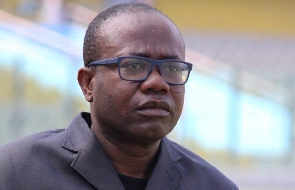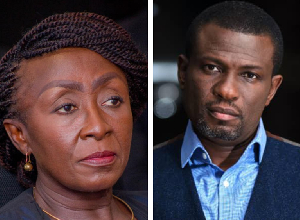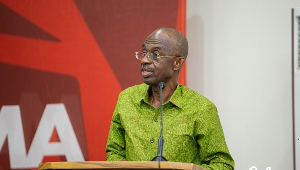The trillion-dollar infrastructure vision
Over the last decades, China has been at the forefront of championing multiple global initiatives, including the Global Development Initiative, the Global Security Initiative, and the Global Civilization Initiative, amongst others.
One such global initiative is the Belt and Road Initiative, which has become known shortly as ‘BRI’.
Launched in 2013 by President Xi Jinping, China’s Belt and Road Initiative (BRI) is one of the most ambitious infrastructure projects ever conceived in the history of our world.
The BRI is earmarked to recreate the historic Silk Road trade route in order to open up the world market and establish a trade and investment network spanning the three continents of Africa, Asia, and Europe to facilitate greater global growth and development.
The Chinese leadership, aspires to maintain an open world economic system and achieve diversified, independent, balanced, and sustainable development with a shared future. The BRI is now not simply an economic initiative but also a global public good instrument, where they’re rallying resources to achieve this ambitious plan.
BRI matters to developing countries
It’s key to mention that the BRI is not a China-only story. The primary goal of the initiative is to address the vast infrastructure demand in developing countries.
As of August 2023, 155 countries were listed as having signed up to the BRI. The participating countries represent more than half of the world's GDP and nearly 75% of its population.
Beyond the numerous global discussions surrounding the viability and relevance of the BRI, the initiative is active, with a number of projects already finished or in progress contributing to economic growth and creating unlimited job opportunities.
As of October 2023, there have been over 3000 projects completed under the BRI generating over 420,000 jobs.
BRI member countries in the global south are aiming to maintain and increase their involvement in the BRI. To these receiving states, where infrastructure financing is desperately needed, geopolitical externalities are of secondary concern.
BRI & Africa’s connectivity ambitions
It’s imperative to ask questions that border on the significance of the BRI for Africa’s own development future. How does the BRI fit into Africa’s infrastructure development agenda? – It’s outright significant.
The primary infrastructure bottlenecks for the continent have long been identified as energy, water, sanitation, telecoms, and transportation. With 30 countries regularly facing power outages and slightly more than a third of Africans having access to electricity,
By 2025, the African Development Bank estimates that the African continent will need to spend up to $170 billion annually to upgrade its infrastructure, with two-thirds of that amount going toward brand-new infrastructure and the remaining one-third going toward maintenance.
In Africa, demand for electricity will increase by 93% by 2035, around 47% of roads will need to be paved, ports must increase their average container handling performance from 20 to 25 to 30 moves per hour, and an additional 300 million people must have access to the Internet to keep up with the continent’s economic growth.
The World Bank estimates that in order to achieve universal Internet access throughout Africa, $100 billion will need to be invested in infrastructure, such as 4G stations, and at least 250,000 kilometers of fiber will be required to build and maintain broadband networks.
For Africa to experience economic success and sustained growth, the infrastructure gap must be filled. Improved infrastructure would make it easier to conduct more intraregional and international trade, lower business costs, increase Africa's competitiveness both domestically and internationally, and act as a catalyst for the continent's economic transformation and diversification through industrialization, value addition, and sustainable and inclusive growth.
BRI is delivering infrastructure development across Africa, and the continent has a more positive view of the Belt and Road Initiative (BRI) than anywhere else outside China.
As of August 2022, 50 of the 55 countries in Africa had signed some sort of memorandum of understanding or other agreement on the BRI.
The African Union has also signed a Memorandum of Understanding (MoU) on BRI cooperation with China.
Some countries, such as Kenya, Tanzania, and Somalia (on the shores of the Indian Ocean), as well as Egypt and Djibouti (on the shores of the Mediterranean Sea), have strategic locations that make them natural BRI partners because they link Africa, Asia, and Europe.
For the rest of the many countries on the continent that have joined the BRI countries list, it’s to help them meet their urgent infrastructural development needs.
Boosting intra-African trade
In January 2015, in Addis Ababa, Ethiopia, at the 24th African Union (AU) Assembly of Heads of State and Government, Africans adopted a shared strategic framework for inclusive growth and sustainable development called Agenda 2063.
It’s meant to be a strategic guide to Africa's development in the next fifty years. The goal of Agenda 2063 is to fulfill seven aspirations, each with specific objectives that, if met, will bring Africa one step closer to realizing its vision for 2063.
The Agenda 2063 states category aspiration number two of Africa’s quest to build a connected continent in all shapes and forms within the next 50 years.
Africans aspire to build “an integrated continent, politically united, and based on the ideals of Pan-Africanism and the vision of Africa’s Renaissance.”
This, according to the goals of these aspirations, would entail developing a world-class infrastructure crisscrossing Africa—"improving connectivity through newer and bolder initiatives to link the continent by rail, road, sea, and air; and developing regional and continental power pools, as well as ICT.”
BRI is already delivering infrastructure development across Africa, and the continent has a more positive view of the Belt and Road Initiative (BRI).
African infrastructure and economic growth may be unified and expedited as a result of China's participation in infrastructure projects on the continent, and the Belt and Road Initiative's goal of enhancing connectivity among member nations resonates directly with Africa’s own ambitions for the next 50 years.
Business News of Wednesday, 25 October 2023
Source: Paul Frimpong, Contributor

















